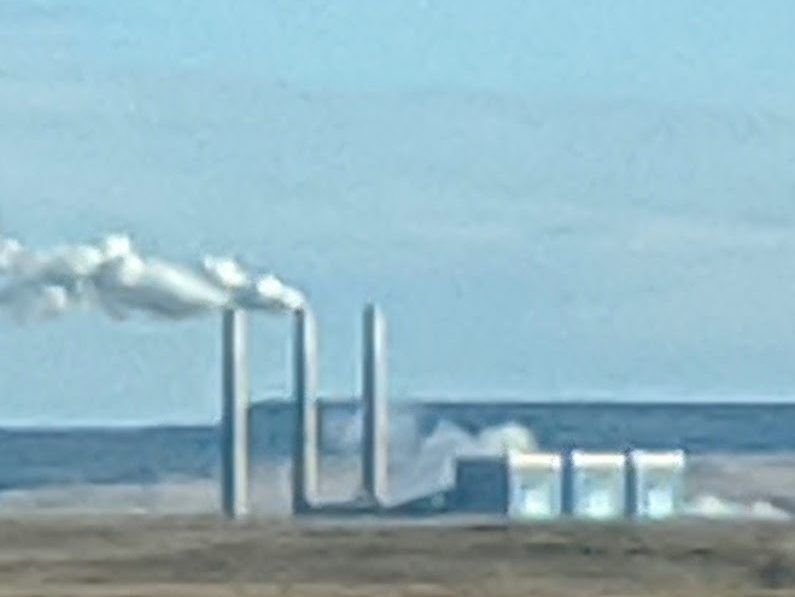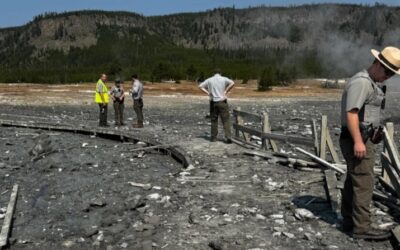When Tri-State Generation and Transmission Association unveiled its Responsible Energy Plan at the beginning of 2020, it released a video showing colorful footage of solar panels and wind turbines in a grassy field. Tri-State, the electrical utility cooperative that provides power to many rural areas of Colorado, New Mexico, Wyoming, and Nebraska, has relied on coal and fossil fuels to generate the bulk of its power for many years. Now, it’s beginning a rapid shift toward increasing renewable energy.
The specifics of this plan are being submitted to Colorado regulators this winter in a document called an Electric Resource Plan, or ERP. Right now, Tri-State still gets two-thirds of its energy from fossil fuel sources. As late as 2016, that amount was over three-quarters. Tri-State Vice President of Communications, Lee Boughey, said, among other benchmarks, that the co-op is on track to meet an 80 percent reduction in greenhouse gas emissions in Colorado by 2030.
“Really, the hallmark of the ERP filing in our preferred scenario is the identification of an additional 1850 megawatts of renewable energy and energy storage that we believe we’ll need to install by 2030,” Boughey said.
The co-op will also close all of its fossil fuel plants in Colorado by the end of the decade. Boughey says its plans show a commitment to providing quote “reliable and responsible” energy to its members. Jessica Matlock, CEO of La Plata Electric Association in southwestern Colorado, says this is the case because of local laws already in place.
“Well, I do know they’re committed because there’s a state mandate that requires them to be committed,” she said.
Matlock is referring to legislation, passed in 2019, that requires utilities in Colorado to reduce their greenhouse gas emissions to 80 percent of 2005 levels by 2030.
This legislation is a bigger influence on Tri-State’s creation of the Responsible Energy Plan than the utility’s commitment to fighting climate change, Matlock says. The cooperative has had a historic culture of viewing fossil fuels as superior to renewable energy, she adds, and that view stretches back a long time. As an example, she recalls working as a staffer on a U.S. senate energy committee in the mid-2000s, where Tri-State would come to lobby alongside fossil fuel investors in support of pro-coal legislation.
“This was an electric cooperative utility, a public power entity, that was advocating,” Matlock said. “The only one in the U.S. that was advocating to keep their coal?”
The process to create Tri-State’s Responsible Energy Plan didn’t start until 2019, after the legislation was passed and after two of Tri-State’s main competitors had released their own versions of renewable energy expansion plans.
Boughey acknowledges some skepticism about the transition towards renewables among some of TriState’s 42 member co-ops. But he says the steps the utility has taken with their plan shows that solar, wind, and hydropower can be reliable and cost-competitive with coal and natural gas. Formerly resistant members are coming around to the changes, he says.
But other co-op members think the transition is moving too slowly. LaPlata Electric and another member are negotiating to exit or modify their TriState contracts, and two others have already left the co-op. Details are still being worked out in court, but the moves stem in part from Tri-State’s contract restrictions on the amount of renewable energy that local cooperatives have been allowed to generate.
For example, Delta Montrose Electric Association in western Colorado finalized its exit in the summer of 2020. It cited the high prices of fossil fuels and Tri-State’s reluctance to add more renewables to its grid in its decision to do so. Another provider in New Mexico followed a similar track several years previously.
Other parts of the Responsible Energy Plan also need improvement, according to Gwen Farnsworth, Senior Energy Policy Advisor at the environmental policy group Western Resource Advocates. While the plan will reduce greenhouse gas emissions from fossil fuels, it doesn’t account for emissions from sources outside Colorado. Specifically, Farnsworth notes Tri-State still has a contract to buy power from a large coal plant in Wyoming.
“So I think that’s going to be one of the big challenges, is figuring out how Tri-State can meet its goals for emissions reductions, for renewable energy, and for cost reductions for their customers in Colorado while they are tied to a contract with an out-of-state generation that is high cost and high emissions,” Farnsworth said.
While Tri-State is considering a plan to stop buying power from that station by 2033, Boughey says it has not made a final commitment and won’t for some time.
“We have to work with other owners of those power plants as we look at the future and the role that we play in the electric system,” he said.
This winter, as Tri-State submits documents about the plan, Colorado regulators will have the chance to require changes, clarifications, and additions. So now, with 2019’s legislation, the state of Colorado will get to decide whether Tri-State’s responsible energy plan is really responsible enough.





